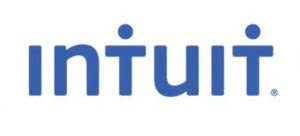
Investors also analyze the LIFO Reserve before investing as it is part of profit or retained earnings. The above examples show that a business’s taxable income in a year differs depending on the inventory valuation method used and the direction of prices. The use of LIFO when prices rise results in a lower taxable income because the last inventory purchased had a higher price and results in a larger deduction. Conversely, the use of FIFO when prices increase results in a higher taxable income because the first inventory purchased will have the lowest price. All three methods could yield the same result if prices remained steady overtime.

In accounting, it represents the contra account that includes that difference.LIFO reserve is crucial when companies use these methods simultaneously. On top of that, it also applies to investors who want to compare various companies that use different approaches. In summary, while the LIFO reserve impacts financial statements and ratios, its effects should be considered carefully regarding the true, economic financial position. Adjustments are often required to realign inventory valuation and operating results to actual replacement costs. Since LIFO provides companies a larger present-value deduction for inventory expenses during times of rising prices, its repeal would increase the cost of capital. As a result, businesses would invest less, which would result in a smaller economy.
Built-in LIFO reserve calculators simplify the process and reduce errors. They can also run through multiple scenarios to provide valuable insights into the financial impact of inventory method changes. Relying on technology enables accurate LIFO reporting each period. In summary, a declining LIFO reserve allows companies to gain some temporary benefit from liquidating old inventory in inflationary times. However, it is not a sustainable boost to profits if inventory levels are not maintained. Companies should closely monitor changes in LIFO reserves as an indicator of inventory and cost management practices over time.
Tracking the LIFO reserve over time helps assess changes in inventory costs and deferred tax liabilities. The LIFO reserve comes about because most businesses use the FIFO, or standard cost method, for internal use and the LIFO method for external reporting, as is the case with tax preparation. This is advantageous in periods of rising prices because it reduces a company’s tax burden when it reports using the LIFO method. The LIFO reserve is an account used to reconcile the difference between the FIFO and LIFO methods of inventory valuation. This difference arises when a business is using the FIFO method as part of its accounting system but is using the LIFO method to report in its financial statements.
As well, the LIFO method may not actually represent the true cost a company paid for its product. This is because the LIFO method is not actually linked to the tracking of physical inventory, just inventory totals. So technically a business can sell older products but use the recent prices of acquiring or manufacturing them in the COGS (Cost Of Goods Sold) equation. The authors of your intermediate accounting textbook probably discuss layers in conjunction with LIFO liquidation. Though it is widely known as LIFO reserve, the use of term “reserve” is much debated as recording of this difference is actually recognizing contra asset against inventory account.
The credit balance in the LIFO reserve reports the difference since the time that LIFO was adopted. The change in the balance during the current year represents the current year’s impact on the cost of goods sold. To provide clarity for financial statement users, companies must clearly disclose the dollar value of the LIFO reserve as a separate line item on the balance sheet. The LIFO reserve balance should also be explained in footnotes with details on its calculation and changes from year to year. Separation and transparency regarding the LIFO reserve contribution to earnings allows shareholders, lenders, and other stakeholders to better understand inventory-related expenses and cash flows. Explicit reporting of the LIFO reserve as its own distinct component improves financial statement interpretability.
LIFO reserve is an accounting term that measures the difference between the first in, first out (FIFO) and last in, first out (LIFO) cost of inventory for bookkeeping purposes. In that case, the new
principles can be applied prospectively (paragraphs 8–9). An entity
makes retrospective application only for the direct effects of the
change (paragraph 10). However, indirect effects—for example,
bonuses—are reflected prospectively (paragraph 10). LIFO reserve quantifies the difference between the FIFO and LIFO inventory valuation methods.

Here are some of the formulas used for the LIFO Reserve calculation. Harold Averkamp (CPA, MBA) has worked as a university accounting instructor, accountant, and consultant lifo reserve journal entry for more than 25 years. He is the sole author of all the materials on AccountingCoach.com. Stay up to date with our team’s knowledge of the latest accounting tools.